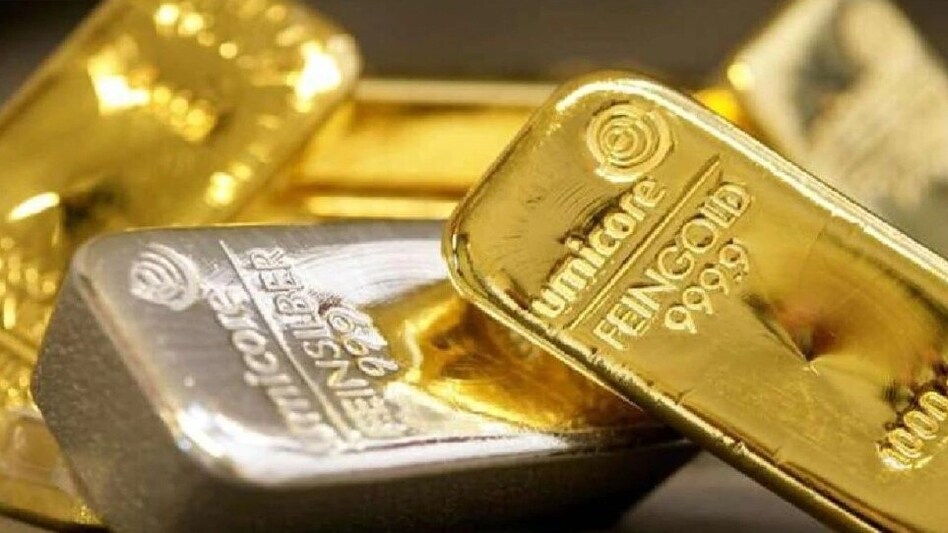
 Many industry experts have emphasised the increasing attractiveness of silver as a more cost-effective option to gold.
Many industry experts have emphasised the increasing attractiveness of silver as a more cost-effective option to gold.
 Many industry experts have emphasised the increasing attractiveness of silver as a more cost-effective option to gold.
Many industry experts have emphasised the increasing attractiveness of silver as a more cost-effective option to gold.Diwali Dhanteras: Gold and silver prices are currently reaching historic levels, driven by a combination of global events, economic uncertainty, and heightened investor interest. Silver recently achieved a new milestone by surpassing the Rs 1 lakh mark earlier this week. On Tuesday, silver was traded at Rs 1,01,323 per kg, representing a significant increase of Rs 1,241 per kg compared to last week.
The question remains, what should investors buy this festive season?
Many industry experts have emphasised the increasing attractiveness of silver as a more cost-effective option to gold, which is currently priced above Rs 79,000 for 10 grams. This surge in silver's popularity can be attributed to its rising demand in the electric vehicle (EV) sector and photovoltaic applications, which is expected to drive global demand in the foreseeable future.
However, a report by Capitalmind Financial Services noted that silver does not warrant a significant allocation to the portfolio despite a stellar run in the 2024.
According to the study, a 50:50 Gold-Nifty portfolio would have outperformed both Gold and Nifty for over 20 years. The ideal portfolio for maximum returns with the least volatility would be Gold: 62%, Nifty: 35% and Silver: 3%.
Returns in last one year
Silver has returned over 30%, year till date (Jan 1-Oct 21’ 24), followed by Gold with 23% compared to 15% for the Nifty. In 24 full years from 2000 to 2023, Silver ended the year ahead in five of them. Gold in seven, and the Nifty closed the year with the highest return in the remaining 12.

What is the recommended asset allocation?
The report noted that the highest return while minimising volatility from 2000 to 2024 would have come from holding a combination of 32% Gold and 68% Nifty. The return recorded from this combination appears to 13.86% (compared to 13.23% for the Nifty). The lowest volatility combination while maximising return would have been a Gold-heavy portfolio with 62% Gold, 35% Nifty and a small 3% Silver allocation. The return recorded with lowest volatility combination is recorded at 13.33%.
“A portfolio primarily allocated to equities, supplemented by moderate Gold exposure, can offer not only more stable risk-adjusted returns but also potentially higher absolute returns with reduced drawdowns compared to a Nifty/Equities-only allocation strategy. Given its historical performance, Silver only merits a small allocation in constructing a low-volatility portfolio,” said Anoop Vijaykumar, Investments & Head of Research, Capitalmind Financial Services.

Nifty vs Gold vs Silver
If Nifty consistently yielded the highest annualised return over two decades, one may question the need to consider investing in Gold or Silver. Allocating 100% of your portfolio to the Nifty and relying on its long-term advantage may seem like a compelling strategy, especially considering the potential for a nearly 20% larger portfolio with just a 1% incremental return compounded over two decades. However, the power of asset allocation can be nuanced. Whether or not an asset is a wise addition to a long-term portfolio depends on its correlation with existing holdings.
For example, during the 2008 global financial crisis, when the Nifty experienced a significant decline of over 50%, Gold emerged as a safe haven, appreciating by almost 30% in the same year. This illustrates the importance of diversification and considering assets that provide stability and protection during times of market volatility.
"This is where the power of asset allocation can get counterintuitive. The answer to whether an asset makes sense as an addition to a long-term portfolio depends on the extent to which it moves together with what you already own. Consider Gold. During the global financial crisis of 2008, when the Nifty fell by over 50%, gold proved to be a safe haven, rising by nearly 30% in the same year," the report noted.